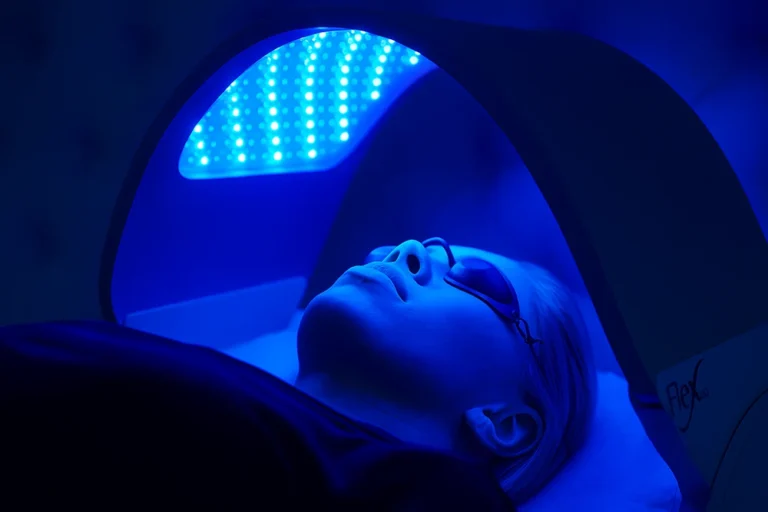Skincare Choices After LED Blue Light and Red Light Treatments
LED light therapy uses specific wavelengths of light to help repair skin, reduce inflammation, fight signs of aging, or control acne-causing bacteria. Choosing the right skincare products after a session can significantly boost your results, while the wrong products may cause irritation or slow down recovery.
Post-Red Light Therapy Skincare
How Red Light Works
Red light (wavelength ~620–750nm) penetrates into the dermis to stimulate collagen production, speed up skin repair, and reduce inflammation. It’s gentle on the skin, making it ideal for anti-aging and restorative treatments.
Recommended Products
Basic Hydration
Gentle moisturizers, serums, or creams containing hyaluronic acid, ceramides, or glycerin.
Repair-Focused Formulas
Serums or masks with ingredients like centella asiatica, panthenol, peptides, or beta-glucan to enhance skin recovery.
Low-Irritation Antioxidants
Products with low concentrations of vitamin C derivatives or resveratrol (avoid highly acidic formulas).
Sunscreen
If your session is during the day, follow up with a gentle, broad-spectrum sunscreen.
Ingredients to Avoid
High-strength acids (AHAs, BHAs)
High-strength retinoids (use only on alternate days once skin tolerance is established)
Harsh essential oils or heavily fragranced products

Post-Blue Light Therapy Skincare
How Blue Light Works
Blue light (wavelength ~405–470nm) targets Cutibacterium acnes (formerly Propionibacterium acnes), helping reduce acne and control oil. However, it can make skin feel temporarily dry or sensitive, and there’s a mild risk of photosensitivity—so aftercare needs to be extra gentle.
Recommended Products
Gentle Hydration
Lightweight serums with sodium hyaluronate or trehalose, paired with low-oil moisturizers to avoid excess greasiness.
Soothing Repair
Products with aloe vera, centella asiatica, or chamomile to calm redness and irritation.
Mild Oil-Control
Serums with 2–5% niacinamide for oil regulation and barrier repair (avoid jumping straight to 10%).
Sunscreen
If treated during the day, opt for a physical (mineral) sunscreen to protect sensitive skin.
Ingredients to Avoid
Strong chemical exfoliants (high-concentration acids)
Harsh acne treatments (high-strength salicylic acid, benzoyl peroxide)
Photosensitizing ingredients (high amounts of citrus essential oils, certain botanical extracts)
Red Light vs. Blue Light Aftercare Summary
| Therapy Type | Main Benefits | Recommended Products | Avoid |
|---|---|---|---|
| Red Light | Repair, anti-inflammatory, anti-aging | Hydrating and repairing serums, gentle antioxidants, sunscreen | High-strength acids, retinoids, irritating essential oils |
| Blue Light | Antibacterial, oil control, acne improvement | Hydration, soothing serums, mild oil-control | Strong acids, harsh acne treatments, photosensitizers |
Pro Tips
Keep your post-treatment skincare minimal: cleanse → hydrate → protect.
Skip any product that causes stinging or burning—even if your skin tolerated it before.
If redness, peeling, or irritation occurs, stick to gentle, repairing formulas until your skin returns to normal.
With the right products, you can make the benefits of red and blue LED light therapy more visible, longer-lasting, and irritation-free.
If you’d like, I can add a “7-Day Post-Treatment Skincare Schedule” to this so readers know exactly what to use morning and night for a full week after treatment. That would make this a ready-to-use guide.

